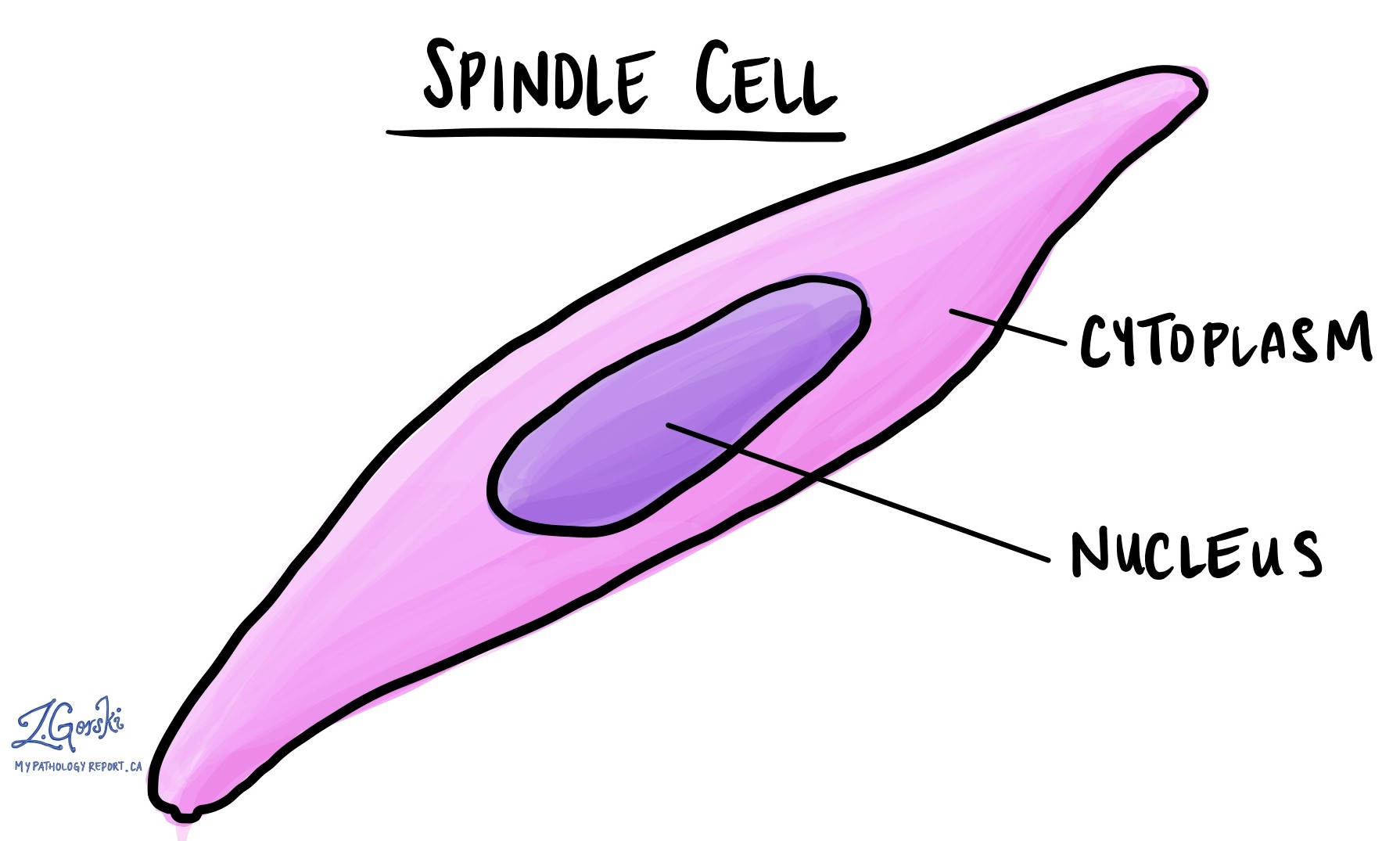MyPathologyReport
October 23, 2023
In pathology, the term spindle cells is used to describe cells that are longer than they are wide. They are found both in normal, healthy tissue and in tumours. The most common type of normal spindle cell is called a fibroblast. Fibroblasts are support cells that are found in a type of connective tissue called stroma.
Some tumours are made up almost entirely of spindle cells. These tumours can be either benign (non-cancerous) or malignant (cancerous). The type of tumour depends on the location in the body and the way the cells look when examined under the microscope. Most cancers made up of spindle cells are called sarcomas. Another type of cancer called a carcinoma can also be made up of these cells and in this case, your pathologist may describe the cells as sarcomatoid.
Your pathology report may describe a tumour that is made up almost entirely of spindle cells as a benign spindle cell neoplasm (if it appears noncancerous) or a malignant spindle cell neoplasm (if it appears to be cancer). This is usually a descriptive or preliminary diagnosis that will be changed once more information is available. Pathologists often use additional tests such as immunohistochemistry to help them reach a more complete and final diagnosis.
About this article
This article was written by doctors to help you read and understand your pathology report. Contact us if you have questions about this article or your pathology report. For a complete introduction to your pathology report, read this article.



